| Zeitschrift Umělec 2001/2 >> Mixed Messages | Übersicht aller Ausgaben | ||||||||||||
|
|||||||||||||
Mixed MessagesZeitschrift Umělec 2001/201.02.2001 Bodil Hovaldt Bojer | media | en cs |
|||||||||||||
|
The expansion of the the global computer network over the past decade has certainly given rise to new art forms, but it has also helped to expand the much older form known simply as mail art. The Internet provided an environment free from institutional and market pressures, and has kicked off new forms of media activism, the same principles mail art was originally based on.
An international network of artists, consisting today of approximately 20,000 people, is engaged in producing mail art. They communicate by sending works of art to each other. The goal is the direct exchange of art, ideas and information between artists from different countries without having to deal with the established art market. In fact, the emphasis is on communication itself, which is regarded as the most important element in the art form. The structure of the network is similar to that of the Internet: horizontal, with a central organizing head. The concept of e-mail art was created in 1991, when the mail artist Cracker Jack Kid launched a website of works by Ray Johnson, who is believed to be the father of mail art. Although the concept behind mail art is rooted in the Fluxus movement of the 1960s and Ray Johnson’s postal projects from the same time period, the origin of mail art could also be traced back to the beginning of the postal system itself. Johnson was the original founder of the New York Correspondence School, which was an international network of artists and poets that used the regular postal system to launch their add-to-and-return system. They also traded a wild assortment of objects, text and finished artworks. Mail artists have always experimented with different art forms in the belief that anything could be done, and there really is no limit regarding techniques, materials or methods. Ray Johnson would send off to other artists his add-to-and-return collages — bunny-headed portraits, puns and rhymes designed to confound and amuse recipients. Art objects commonly sent nowadays include stamps, postcards, audiocassettes, video and computer graphics. The exchanges are mostly effected by post but the fax machine, the Internet and especially e-mail are now all common mediums. E-mail art has become a logical extension of mail art. The Internet has in some ways changed and developed the form of mail art. It’s now easier to call people together for an exhibition or project by using one of the many message boards. Projects are then published on the Internet, making them accessible to any user, and computer graphics are often an intrinsic part of the show. Sending artworks by e-mail is less expensive, and it’s easier to reach a larger group of recipients. On the other hand, e-mail art requires that all participants have access to a computer and the Internet, to the exclusion of others, in contrast with the universality of snail-mail art. In addition, while mail art is limited to a one-to-one relationship, e-mail art (or i-mailart) is capable of reaching a far greater number of people and is currently developing along the lines set by cyberspace, becoming a net of communication and information that plays with all of the many possibilities along the electronic highway. With both mail and e-mail art there is no individual artist, viewer, critic or gallery as such, because everyone in the network functions as all components at once. It is a free-flowing interchange of creativity without borders, rules or money. It stands outside the kind of economic involvement and speculation that exists in the established art market and the pitch is level for equal production. A work is not likely to return to the original sender and is often transformed en route. Despite mail art’s resistance to becoming a part of the established art world, the very museums and galleries it struggled to circumvent have taken notice, and works can now be found in many major museums, like the Getty, the Tate and the Whitney. Dissenters have questioned the artistic quality of mail art, mainly because there are no schools, critics or rules to separate the artists from the amateurs. The fact is, anyone can be a mail artist, which is exactly why mail art is not intended for the mainstream art scene and is in turn its particular strength. In a way, it continues the project of the avant-garde by breaking down boundaries and the art institution monopoly though free distribution, and the joining of life and art within a wider perspective. But the animosity known between institutional and net art seems not to exist between classical and electronic mail art. The Electronic Museum of Mail Art features links to the history of the form as well as i-mailart newsgroups on the Internet. To e-mail artist and moderator of one newsgroup, Craig Purcell, all digital images on the Internet are found objects, which can be transformed to create new meaning. Users of the group are encouraged “to copy and modify” all posted images. By exploring these features of the Internet he joins a large group of net artists currently experimenting with Internet resources and succeeding in transforming artistic concepts. The next level for e-mail art will probably be the incorporation of sound and motion.
01.02.2001
Empfohlene Artikel
|
|||||||||||||
|
04.02.2020 10:17
Letošní 50. ročník Art Basel přilákal celkem 93 000 návštěvníků a sběratelů z 80 zemí světa. 290 prémiových galerií představilo umělecká díla od počátku 20. století až po současnost. Hlavní sektor přehlídky, tradičně v prvním patře výstavního prostoru, představil 232 předních galerií z celého světa nabízející umění nejvyšší kvality. Veletrh ukázal vzestupný trend prodeje prostřednictvím galerií jak soukromým sbírkám, tak i institucím. Kromě hlavního veletrhu stály za návštěvu i ty přidružené: Volta, Liste a Photo Basel, k tomu doprovodné programy a výstavy v místních institucích, které kvalitou daleko přesahují hranice města tj. Kunsthalle Basel, Kunstmuseum, Tinguely muzeum nebo Fondation Beyeler.
|







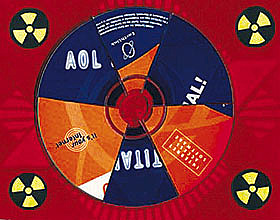
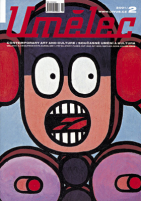





















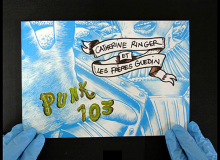
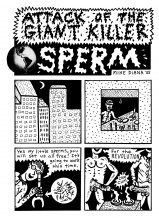
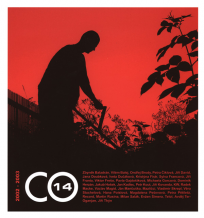
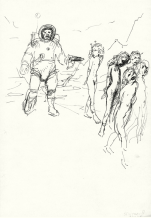


 We Are Rising National Gallery For You! Go to Kyjov by Krásná Lípa no.37.
We Are Rising National Gallery For You! Go to Kyjov by Krásná Lípa no.37.
Kommentar
Der Artikel ist bisher nicht kommentiert wordenNeuen Kommentar einfügen